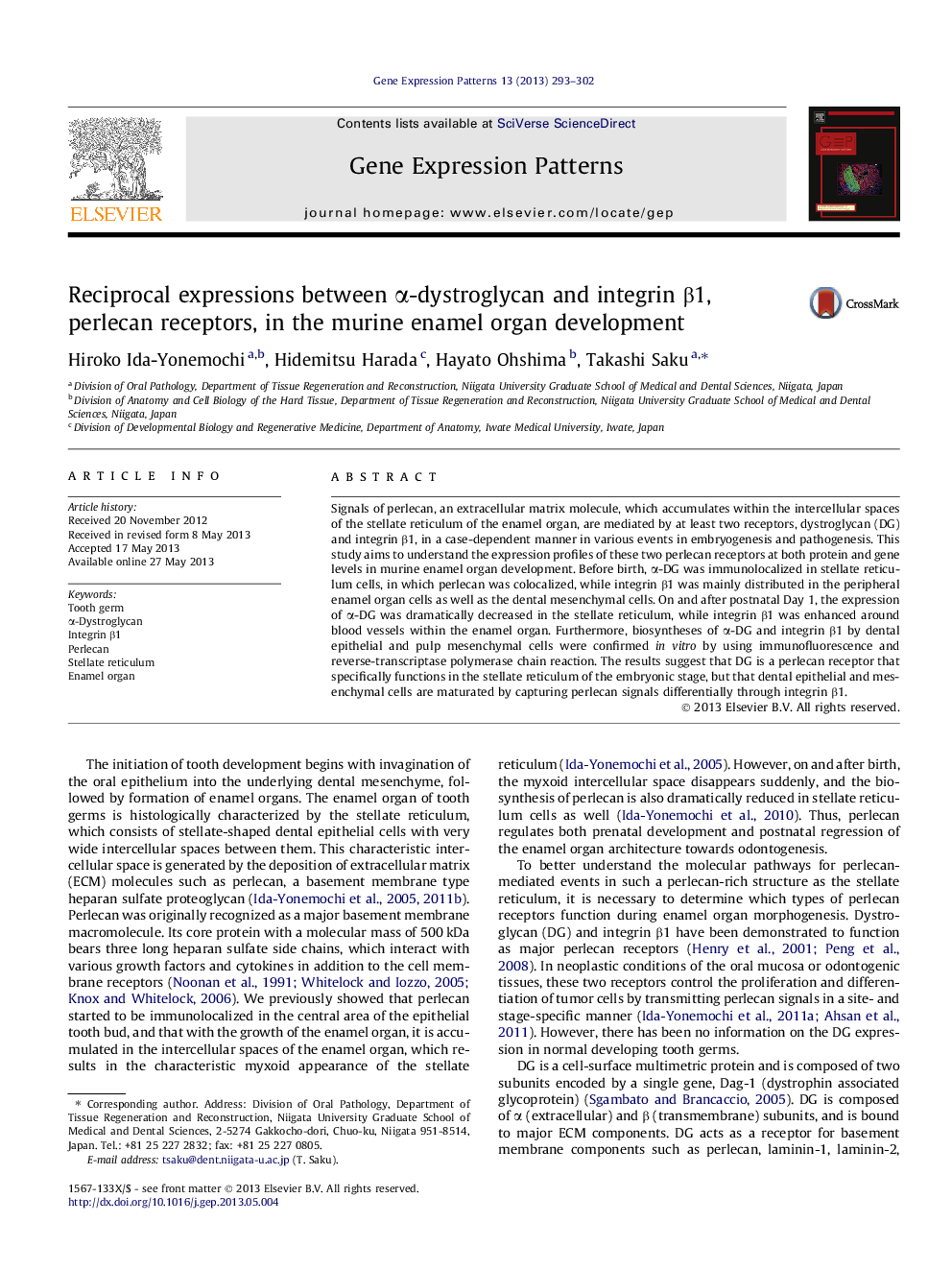| Article ID | Journal | Published Year | Pages | File Type |
|---|---|---|---|---|
| 10940148 | Gene Expression Patterns | 2013 | 10 Pages |
Abstract
Signals of perlecan, an extracellular matrix molecule, which accumulates within the intercellular spaces of the stellate reticulum of the enamel organ, are mediated by at least two receptors, dystroglycan (DG) and integrin β1, in a case-dependent manner in various events in embryogenesis and pathogenesis. This study aims to understand the expression profiles of these two perlecan receptors at both protein and gene levels in murine enamel organ development. Before birth, α-DG was immunolocalized in stellate reticulum cells, in which perlecan was colocalized, while integrin β1 was mainly distributed in the peripheral enamel organ cells as well as the dental mesenchymal cells. On and after postnatal Day 1, the expression of α-DG was dramatically decreased in the stellate reticulum, while integrin β1 was enhanced around blood vessels within the enamel organ. Furthermore, biosyntheses of α-DG and integrin β1 by dental epithelial and pulp mesenchymal cells were confirmed in vitro by using immunofluorescence and reverse-transcriptase polymerase chain reaction. The results suggest that DG is a perlecan receptor that specifically functions in the stellate reticulum of the embryonic stage, but that dental epithelial and mesenchymal cells are maturated by capturing perlecan signals differentially through integrin β1.
Related Topics
Life Sciences
Biochemistry, Genetics and Molecular Biology
Cell Biology
Authors
Hiroko Ida-Yonemochi, Hidemitsu Harada, Hayato Ohshima, Takashi Saku,
